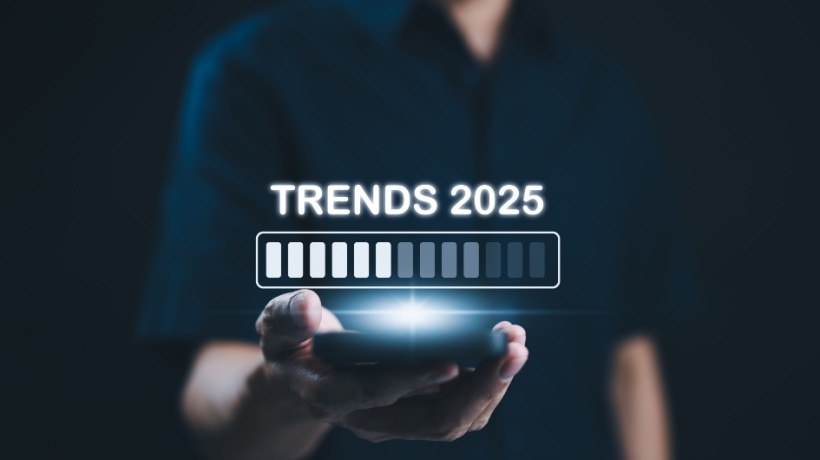L&D Trends: Focus On People, Processes, Technology, And Data
As 2022 came to a close, the way learners prefer to learn continued to transform, and the Learning and Development industry saw some major shifts. Looking ahead, here are five L&D trends we predict for 2023 and encourage you to explore so that you can stay ahead of the curve. As you would expect, these trends hinge first on people, then processes, technology, and data.
5 Trends To Consider In 2023
L&D Becomes A Job Perk
A trend that we saw taking shape in 2022 and now will get entrenched is how strongly L&D becomes a job perk. As organizations grappled with the great resignation, quiet quitting, and the absolute preference for remote work, the role of Learning & Development is finally elevated to a must-have, differentiating job perk. As a result, in mid-2022, a Society for Human Resource Management (SHRM) sponsored survey showed that 67% of human resources functions started receiving budget increases to be able to deliver the learning talent needs [1]. Employees want to go where they feel heard, seen, and encouraged to grow both personally and professionally. This means that the more robust, well-funded, and learner-centered an organization’s L&D function is, the better its chances to attract and retain talent are. We expect this trend of L&D becoming a differentiating job perk to continue to grow across all industries.
Peer-To-Peer Learning, Mentoring, And Coaching
During 2022, we saw peer-to-peer coaching take center stage in upskilling and reskilling efforts. With peer-to-peer involvement, learning is no longer prescribed by the organization but organically evolving amongst employees. On one hand, peer-to-peer learning gives rising leaders within each line of business the opportunity to create or curate online learning and supplement it with personalized mentoring and coaching to their peers. On the other hand, peer-to-peer learning encourages junior learners to feel more comfortable and psychologically safe to learn from their peers instead of intimidating externally sourced subject matter experts who lack knowledge of the context and the culture of the organization. There is more: peer-to-peer learning brings numerous additional benefits: it's less costly in hard dollars for the organization, it creates an organic in-house, high-potentials pipeline, drives upskilling faster, fosters employee engagement and belonging, supports diversity, equity and inclusion, and strengthens the organizational culture [2]. Peer-to-peer learning is a win-win trend, here to stay.
Hybrid Work Needs Hybrid Learning
As many organizations transitioned to partial returns to the office, hybrid work has been slowly forming into the modus operandi. However, many employees still prefer working from home, so organizations have been grappling with striking the right balance between engaging employees in person and online to further define hybrid work guardrails. As employees continue to work in hybrid environments, they also need hybrid learning. Organizations have been experimenting with adaptive artificial intelligence (Adaptive AI) and extended reality (XR) capabilities, such as augmented reality and virtual reality in learning, and how to complement that with in-person learning experiences. We will continue to see growth in this area. This means that organizations will continue to seek the right balance of in-person and online learning that fits their employees’ needs and preferences. For example, microlearning complemented by peer-to-peer learning is an example of hybrid learning. We expect hybrid learning to continue to grow and evolve in 2023.
Macrovideos For Microlearning
With hybrid work environments, navigating work and home life under the same roof, and still striving to grow, learners now have even less time and shorter attention spans. Ergo, the emergence of microvideos as 30-60 second microlearning experiences. Mostly home-made quickly on personal smart devices, microvideos do have a structure: they open with an emotional connection pull to attract the learner, then quickly frame the context and value of the learning, offer the learning content, direct the learner to reflect on what they learned, and finally close with an emotional connection push.
As shown in Richard Meyer’s seminal research, multimedia learning works in seconds: images and sounds are stored in our sensory memory for 1-5 seconds, then shift to our short-term memory for 20 seconds, and after repletion, the learning shifts to our long-term memory. Platforms such as TikTok and YouTube Shorts make this easy for anyone to create. We expect this trend to continue to grow exponentially in 2023.
L&D Data Analytics Reign Supreme
As learning management and learning experience systems leverage experience Application Program Interfaces (xAPI), you can now collect, store, and track very specific data on learner micro-behaviors around various learning experiences. This information is powerful for you, your Learning and Development team, and your broader organization. It can pinpoint learner preferences, needs, and wants at the individual, cohort, and organizational levels. Using this data, you can now easily support your request for a bigger budget with robust and specific data. You can also allocate your resources more strategically to those learning assets and experiences that are most liked and recommended by your learners.
Additionally, you can use the data to sunset or tweak learning assets and experiences that are presently not adding value to your learners’ growth and learning journeys. Furthermore, by sharing credible and reliable learning data emanating from your L&D team to the rest of your organization, you can also influence your broader organization to embrace a data-driven culture and make better informed data-driven decisions.
Conclusion
As we shift to 2023, we predict five key Learning and Development trends that are important for L&D teams to explore, adopt, and adapt to their contexts. These trends are:
- L&D becomes a job perk
- Peer-to-Peer Learning, Mentoring, and coaching
- Hybrid work needs hybrid learning
- Microvideos for microlearning
- L&D data analytics reign supreme
Naturally, these trends hinge on your people, processes, technology, and data elements of your learning ecosystem. The trends we recommend exploring will strengthen your talent, optimize your processes, embrace new technologies and leverage your data. This will result in more engaged employees, lower costs, more efficient processes, and data-driven decisions. As an L&D leader, we encourage you to examine these trends and juxtapose them to your organizational context and to discern which make sense to explore and possibly adapt and implement.
References
[1] Companies respond to The Great Resignation with higher L&D budgets, survey finds
[2] What Is Peer-to-Peer Learning in the Workplace? (+Examples)






![L&D Trends 2025: Your Guide To Intelligent Learning Strategies For The Year Ahead [eBook Launch]](https://cdn.elearningindustry.com/wp-content/uploads/2025/01/LD-Trends-2025-Intelligent-Learning-Strategies-For-This-Year-.jpg)


